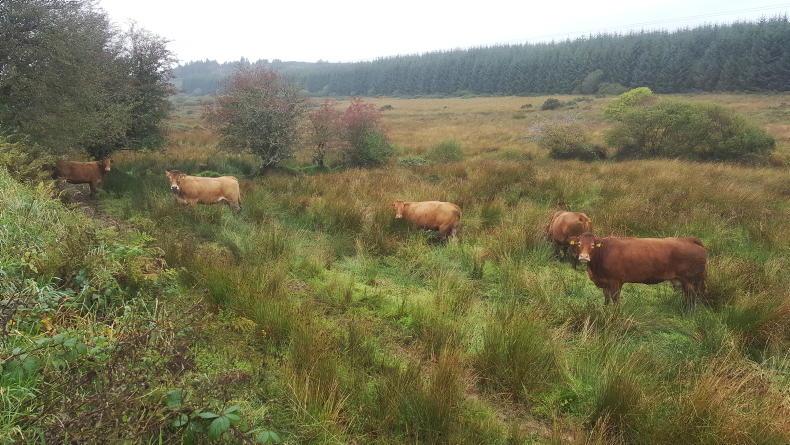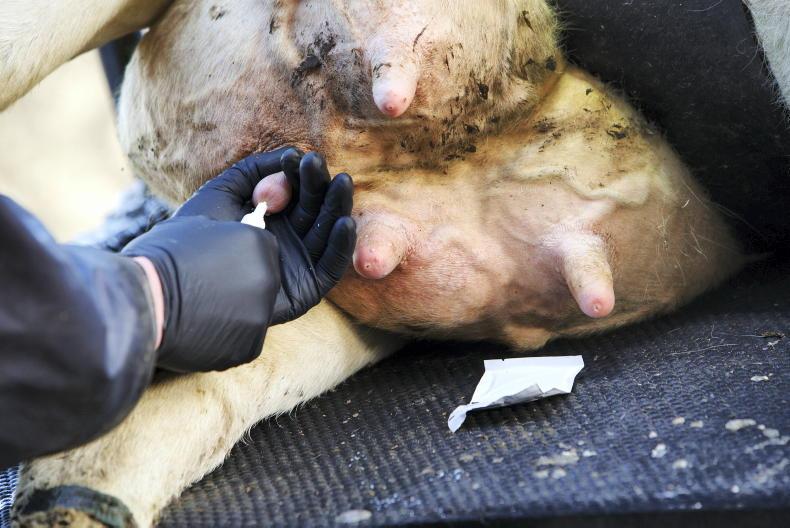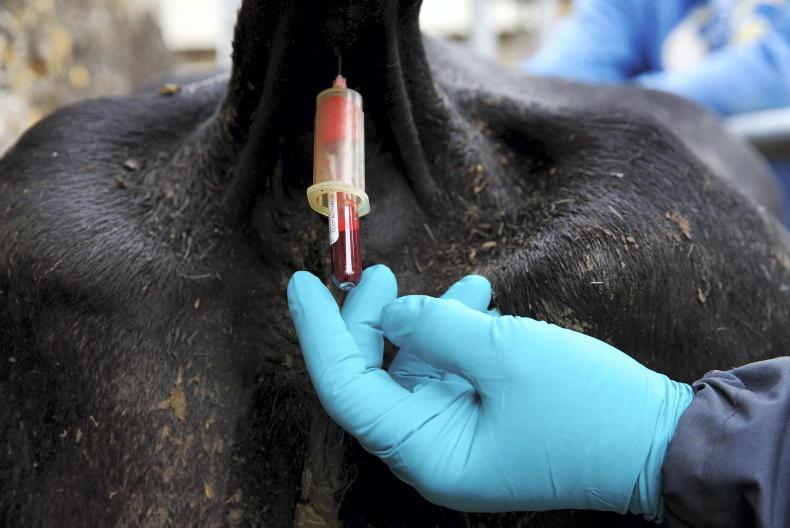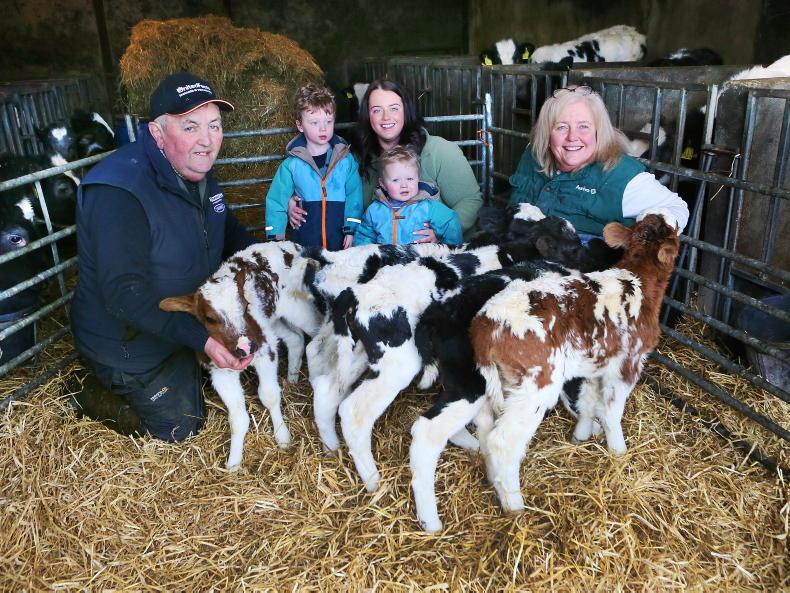Fly activity and mastitis
Fly activity has increased a lot over the past two weeks and with that so have the number of cases of mastitis in dry cows and heifers.
If the problem is detected early and if treatment is given in time it can be treated quite successfully, but it can be easily missed as these stock groups often do not get the same attention as spring cows or growing cattle.
It’s a problem that can affect dairy and beef cows. Summer mastitis is less common in spring-calving cows as the calf is sucking the cow regularly but can occur in late-calving cows where calves are unable to suck all four quarters and mastitis develops.
Prevention is better than cure
Particularly high-risk are areas with trees, close to water or those that have plenty of shelter from hedges, as this will attract flies.
Prevention is better than cure. Treating cows with a pour-on insecticide can help prevent the problem, but the cover period varies with different products.
As the peak risk period is normally in late July and August, cows may need a second treatment.
Applying tar can work, but that’s less practical as it needs to be reapplied every three to four days.
The swollen udder causes discomfort to the animal, which results in stiffness and lameness when walking
Cows with summer mastitis will have a swollen udder and will generally have flies around the teat.
The swollen udder causes discomfort to the animal, which results in stiffness and lameness when walking.
Cows generally develop a temperature, and become isolated and dull in appearance.
When drawing a quarter, the characteristic thick, clotted secretion is present.
If an antibiotic tube is being used to treat an infected quarter, make sure you clean the teat and use a glove. Good hygiene and preventing further infection is very important.
The risk for redwater is highest during the summer when the ticks are most active but it can occur anytime, so it’s important to be vigilant for signs of this disease.
Sometimes during wet weather conditions animals look for shelter in rougher areas of a farm and pick up ticks easily.
It can also occur where a water supply is broken or off and animals start to drink out of drains or pools. This will increase the risk of them picking up ticks around these areas.
Bought-in cattle are more prone to redwater because these cattle may not have built up immunity as younger cattle on the farm they have come from.
Ticks are more likely to be present in land with scrub, rushes and gorse as these are ideal habitats for ticks. Homebred stock should be used to graze these areas if you can.
Herd stock regularly and look out for symptoms like red urine, dullness or no appetite, high temperatures, weakness, anaemia and animals standing away from the herd.
Veterinary advice should be sought in suspected cases.
If you get a confirmed case the likelihood is you will have to treat the group as they will also be susceptible to contracting the disease.
Animals can be injected with Imizol to prevent and treat redwater.
Animals grazing rough areas of the farm should also be treated with an avermectin-based pour-on to help control ticks.
Photosensitisation is where an affected animal’s skin becomes sensitive to sunlight.
It can affect all farm animals but is more common in cattle.
It’s a condition that occurs in very sunny weather during the summer months.
There are three different types of photosensitisation that can occur.
The first is where a cow or animal eats a plant containing a photodynamic agent such as St John’s Wort.
The second is genetic where a cow or animal with lighter pigments in their skin have a reaction to UV light.
The third cause can be liver damage usually by liver fluke and this can lead to more photodynamic agents in the skin.
Symptoms
The first areas to become affected by photosensitisation are the areas with no hair – the muzzle, teats, around the eyes and scrotum.
These areas become red and sore. The next areas to be affected are the white areas of the body, so animals with more white areas will be more prone to the disease.
Very severe cases could see large areas of the skin actually pull away from the body
Affected animals will be in severe pain and will appear dull and agitated.
Very severe cases could see large areas of the skin actually pull away from the body and it can take a few weeks for the underlying area of skin to heal.
Treatment
Consult your vet in all cases. The animal should be housed out of direct sunlight in a dark shed for seven to 10 days and maybe longer where it’s a severe case.
Affected animals should receive painkillers and antibiotics where the chances of skin infection are high. Emollient creams can also be used to nurse the skin back to full health.
Recovery isn’t quick – time and patience will be needed to bring animals back to full health.
Prevention and control
Good control of liver fluke will help to reduce the likelihood of the disease occurring. Walking your farm and making sure there is no St John’s wort in grazing fields or silage fields will also help to prevent the disease.
Fly activity and mastitis
Fly activity has increased a lot over the past two weeks and with that so have the number of cases of mastitis in dry cows and heifers.
If the problem is detected early and if treatment is given in time it can be treated quite successfully, but it can be easily missed as these stock groups often do not get the same attention as spring cows or growing cattle.
It’s a problem that can affect dairy and beef cows. Summer mastitis is less common in spring-calving cows as the calf is sucking the cow regularly but can occur in late-calving cows where calves are unable to suck all four quarters and mastitis develops.
Prevention is better than cure
Particularly high-risk are areas with trees, close to water or those that have plenty of shelter from hedges, as this will attract flies.
Prevention is better than cure. Treating cows with a pour-on insecticide can help prevent the problem, but the cover period varies with different products.
As the peak risk period is normally in late July and August, cows may need a second treatment.
Applying tar can work, but that’s less practical as it needs to be reapplied every three to four days.
The swollen udder causes discomfort to the animal, which results in stiffness and lameness when walking
Cows with summer mastitis will have a swollen udder and will generally have flies around the teat.
The swollen udder causes discomfort to the animal, which results in stiffness and lameness when walking.
Cows generally develop a temperature, and become isolated and dull in appearance.
When drawing a quarter, the characteristic thick, clotted secretion is present.
If an antibiotic tube is being used to treat an infected quarter, make sure you clean the teat and use a glove. Good hygiene and preventing further infection is very important.
The risk for redwater is highest during the summer when the ticks are most active but it can occur anytime, so it’s important to be vigilant for signs of this disease.
Sometimes during wet weather conditions animals look for shelter in rougher areas of a farm and pick up ticks easily.
It can also occur where a water supply is broken or off and animals start to drink out of drains or pools. This will increase the risk of them picking up ticks around these areas.
Bought-in cattle are more prone to redwater because these cattle may not have built up immunity as younger cattle on the farm they have come from.
Ticks are more likely to be present in land with scrub, rushes and gorse as these are ideal habitats for ticks. Homebred stock should be used to graze these areas if you can.
Herd stock regularly and look out for symptoms like red urine, dullness or no appetite, high temperatures, weakness, anaemia and animals standing away from the herd.
Veterinary advice should be sought in suspected cases.
If you get a confirmed case the likelihood is you will have to treat the group as they will also be susceptible to contracting the disease.
Animals can be injected with Imizol to prevent and treat redwater.
Animals grazing rough areas of the farm should also be treated with an avermectin-based pour-on to help control ticks.
Photosensitisation is where an affected animal’s skin becomes sensitive to sunlight.
It can affect all farm animals but is more common in cattle.
It’s a condition that occurs in very sunny weather during the summer months.
There are three different types of photosensitisation that can occur.
The first is where a cow or animal eats a plant containing a photodynamic agent such as St John’s Wort.
The second is genetic where a cow or animal with lighter pigments in their skin have a reaction to UV light.
The third cause can be liver damage usually by liver fluke and this can lead to more photodynamic agents in the skin.
Symptoms
The first areas to become affected by photosensitisation are the areas with no hair – the muzzle, teats, around the eyes and scrotum.
These areas become red and sore. The next areas to be affected are the white areas of the body, so animals with more white areas will be more prone to the disease.
Very severe cases could see large areas of the skin actually pull away from the body
Affected animals will be in severe pain and will appear dull and agitated.
Very severe cases could see large areas of the skin actually pull away from the body and it can take a few weeks for the underlying area of skin to heal.
Treatment
Consult your vet in all cases. The animal should be housed out of direct sunlight in a dark shed for seven to 10 days and maybe longer where it’s a severe case.
Affected animals should receive painkillers and antibiotics where the chances of skin infection are high. Emollient creams can also be used to nurse the skin back to full health.
Recovery isn’t quick – time and patience will be needed to bring animals back to full health.
Prevention and control
Good control of liver fluke will help to reduce the likelihood of the disease occurring. Walking your farm and making sure there is no St John’s wort in grazing fields or silage fields will also help to prevent the disease.












SHARING OPTIONS